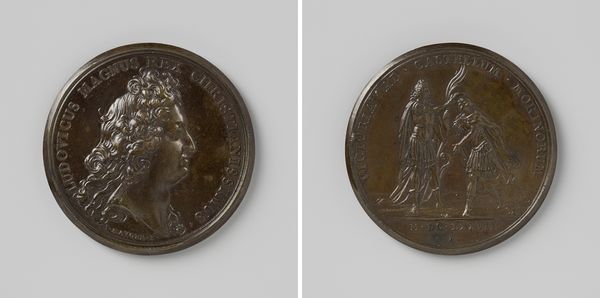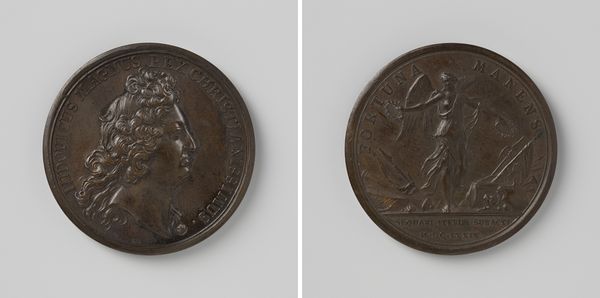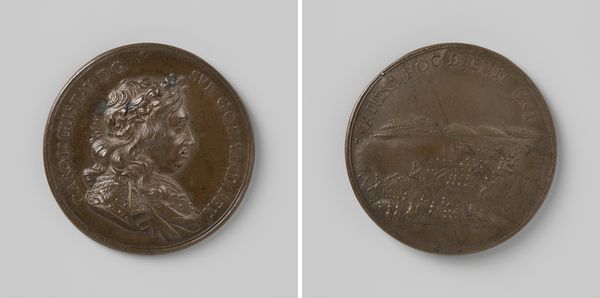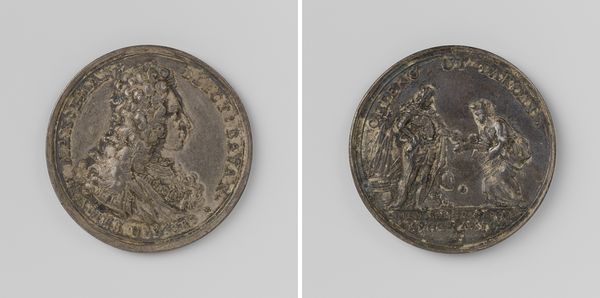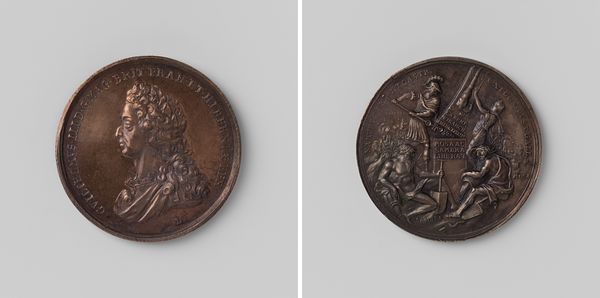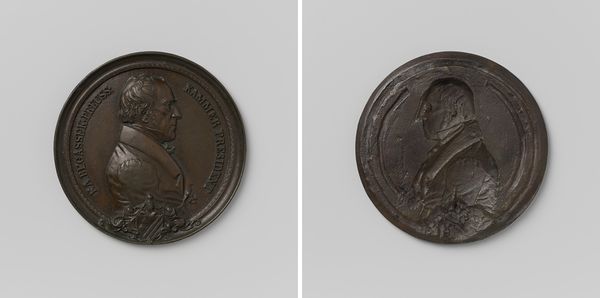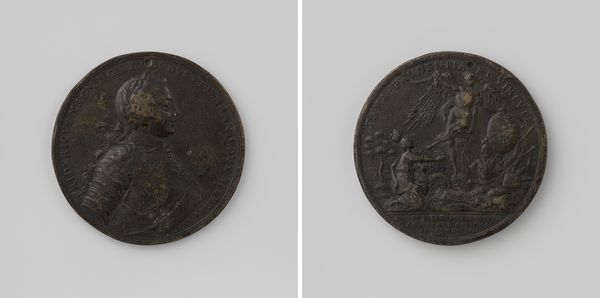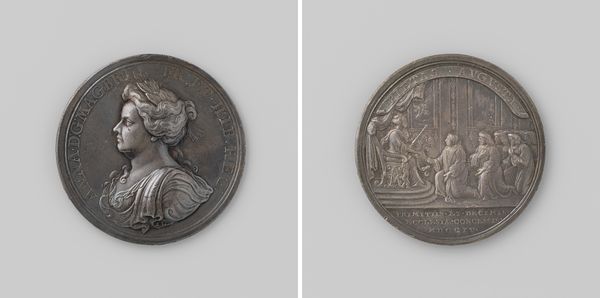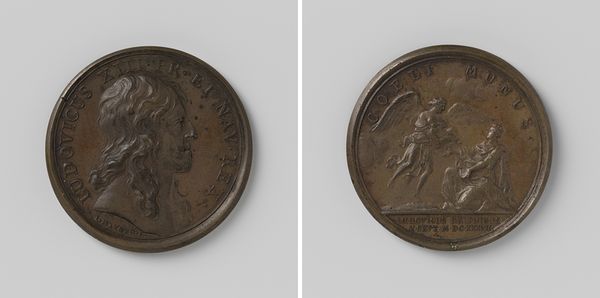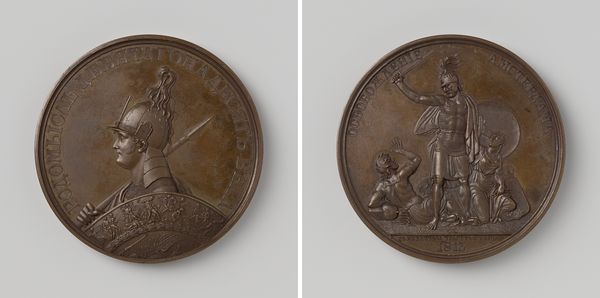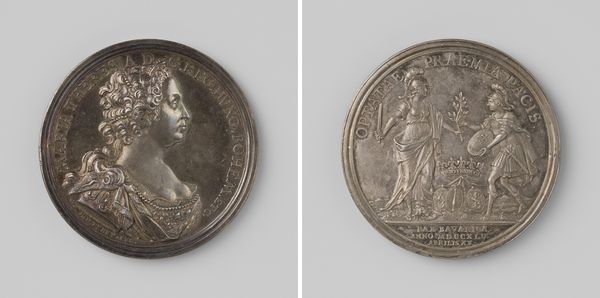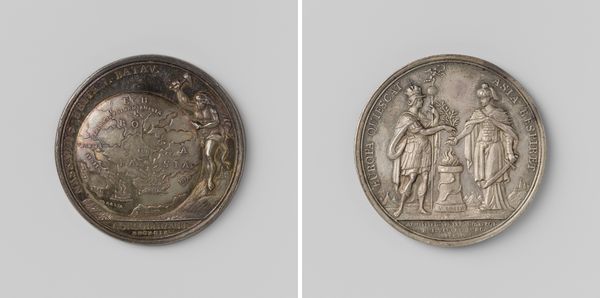
relief, bronze, sculpture, engraving
#
portrait
#
medieval
#
baroque
#
sculpture
#
relief
#
bronze
#
sculpture
#
history-painting
#
academic-art
#
engraving
Dimensions: diameter 4.1 cm, weight 35.28 gr
Copyright: Rijks Museum: Open Domain
Curator: What strikes me immediately about this bronze relief, "Overlijden van Maria II van Engeland," created around 1731 by Jean Dassier, is its rather somber, weighty feeling. It has a distinctly Baroque heaviness. Editor: Absolutely, and if we delve deeper, we'll find the iconography dense with meaning. The piece depicts, as the title suggests, the death of Queen Mary II. Look at the figures around the deathbed, rendered in that distinctly academic style, perhaps angels or mourners attending her last moments. Curator: I’m more interested in the production itself. Consider Dassier’s choice of bronze. It lends permanence, a sense of gravitas, appropriate for commemorating a monarch’s passing, of course, but it also speaks to a particular kind of artistic patronage and consumption at the time. Editor: Yes, the material is certainly significant. Bronze has been historically tied to power and commemoration. The visual symbolism employed, though, is equally important: the weeping figures, the drapery framing the scene—they speak of mortality but also of theatrical staging of grief and mourning traditions surrounding royalty. Curator: It's fascinating to think about where this object might have been displayed. Was it intended for private contemplation or a more public form of remembrance? How might the average person in 1731 have understood the value and symbolism embedded in the bronze itself versus, say, a similar scene rendered in paint or print? The very means of distribution dictated its cultural reach. Editor: Those are essential considerations. Furthermore, the piece resonates with echoes of medieval morality plays in its visual rhetoric, with an overlay of Baroque drama. Death is presented here not just as an end, but as a pivotal moment, almost performative in its unfolding, influencing attitudes towards the English monarchy and its legacy. The very visuality dictates how cultural memory is being actively shaped through a blend of historical, and emotional weight, frozen for future generations in this engraving. Curator: Thinking about the mold-making process and the possible repetitions of this image further underscores that careful manufacture allows certain elites access to commemorative devices that allow constant return to the event—controlling memory. Editor: Quite right. Ultimately, this object offers a poignant reminder of how cultures negotiate mortality, memory, and the power of representation using rich symbolism that reinforces legacy and lineage across generations. Curator: Agreed. A testament, really, to the enduring power of both materials and messaging in shaping historical narratives, carefully selected and produced.
Comments
No comments
Be the first to comment and join the conversation on the ultimate creative platform.
